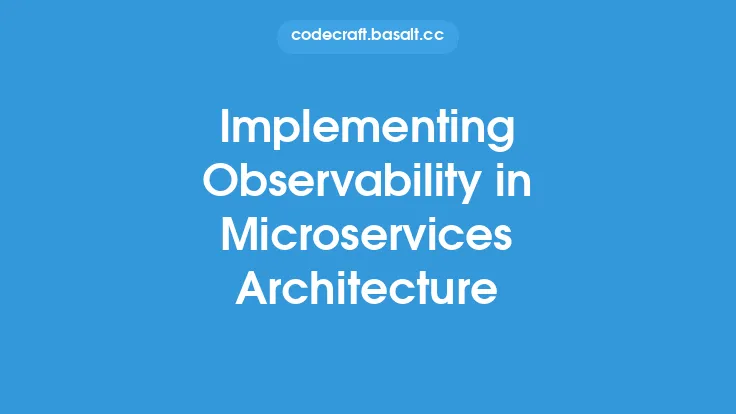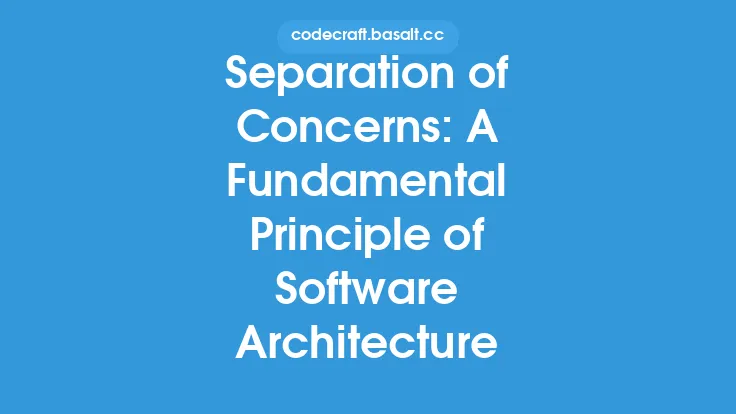Microservices architecture is an approach to software development that structures an application as a collection of small, independent services. Each service is designed to perform a specific task and can be developed, tested, and deployed independently of other services in the application. This approach has gained popularity in recent years due to its ability to improve the scalability, flexibility, and maintainability of complex software systems.
Introduction to Microservices
Microservices architecture is a response to the limitations of traditional monolithic architecture, where a single, self-contained application is built as a unified unit. In a monolithic architecture, all components of the application are tightly coupled, making it difficult to modify or update individual components without affecting the entire system. In contrast, microservices architecture allows for the development of individual services that can be modified, updated, or replaced without affecting other parts of the application.
Characteristics of Microservices
Microservices have several key characteristics that distinguish them from traditional monolithic applications. These characteristics include:
- Loose Coupling: Microservices are designed to be independent and loosely coupled, allowing them to be developed, tested, and deployed separately.
- Autonomy: Each microservice is responsible for its own behavior and decision-making, allowing it to operate independently of other services.
- Organized Around Business Capabilities: Microservices are organized around the business capabilities they provide, rather than being structured around technical layers or components.
- Scaling: Microservices can be scaled independently, allowing for more efficient use of resources and improved performance.
- Decentralized Data Management: Each microservice is responsible for its own data management, allowing for greater flexibility and autonomy.
Microservices Architecture Patterns
There are several microservices architecture patterns that can be used to design and implement microservices-based systems. These patterns include:
- Service-Oriented Architecture (SOA): SOA is an approach to software development that structures an application as a collection of services that communicate with each other.
- Event-Driven Architecture (EDA): EDA is an approach to software development that structures an application around the production, detection, and consumption of events.
- Domain-Driven Design (DDD): DDD is an approach to software development that focuses on understanding the core business domain and modeling it in code.
Microservices Communication
Microservices communication is a critical aspect of microservices architecture, as it allows services to exchange data and coordinate their behavior. There are several microservices communication patterns, including:
- Synchronous Communication: Synchronous communication involves one service sending a request to another service and waiting for a response.
- Asynchronous Communication: Asynchronous communication involves one service sending a request to another service and continuing to operate without waiting for a response.
- Message-Based Communication: Message-based communication involves services exchanging messages with each other, either through a message broker or directly.
Microservices Deployment
Microservices deployment involves deploying individual services to a production environment, where they can be accessed by users or other services. There are several microservices deployment strategies, including:
- Containerization: Containerization involves packaging each service into a container, which can be deployed to a production environment.
- Serverless Deployment: Serverless deployment involves deploying services to a cloud provider, which manages the underlying infrastructure and scaling.
- Platform-as-a-Service (PaaS): PaaS involves deploying services to a cloud provider, which provides a managed platform for deploying and scaling applications.
Microservices Testing
Microservices testing involves testing individual services to ensure they are functioning correctly and meeting the required standards. There are several microservices testing strategies, including:
- Unit Testing: Unit testing involves testing individual components or services in isolation.
- Integration Testing: Integration testing involves testing how services interact with each other.
- End-to-End Testing: End-to-end testing involves testing the entire application, from user input to backend processing.
Conclusion
Microservices architecture is a powerful approach to software development that can improve the scalability, flexibility, and maintainability of complex software systems. By understanding the characteristics, patterns, and communication strategies of microservices, developers can design and implement effective microservices-based systems. Additionally, by using containerization, serverless deployment, and platform-as-a-service, developers can deploy and manage microservices in a production environment. Finally, by using unit testing, integration testing, and end-to-end testing, developers can ensure that microservices are functioning correctly and meeting the required standards.





